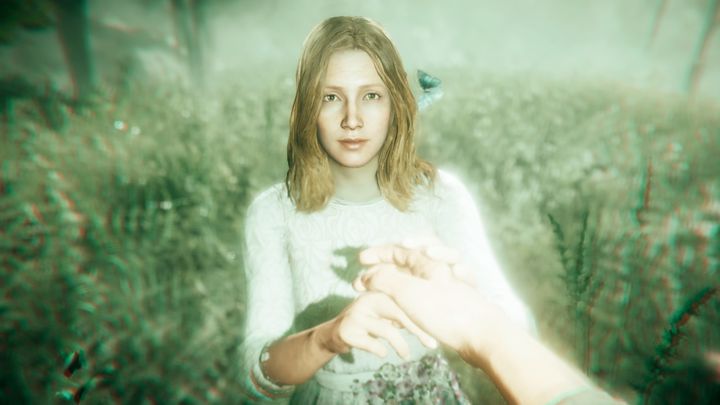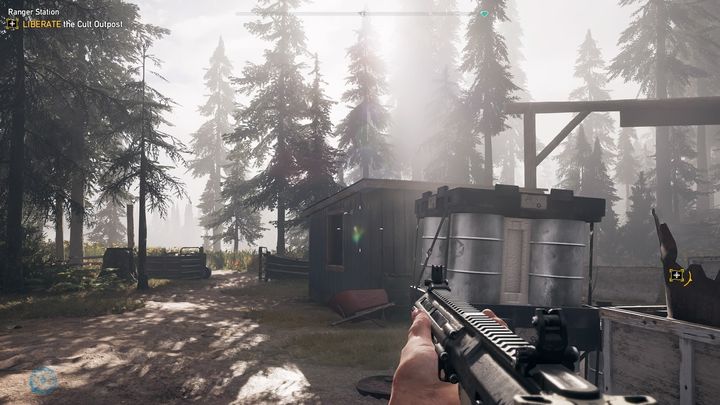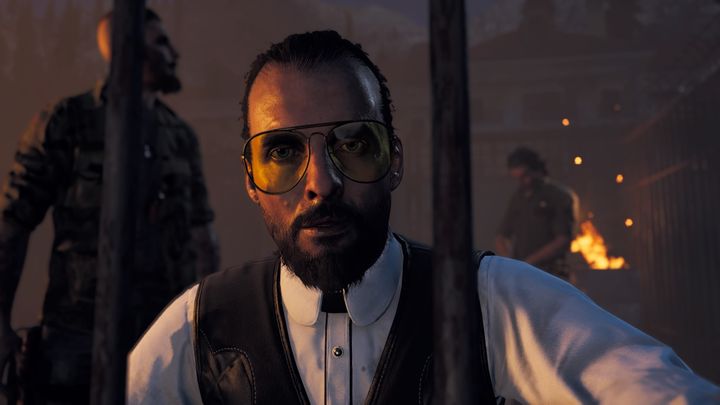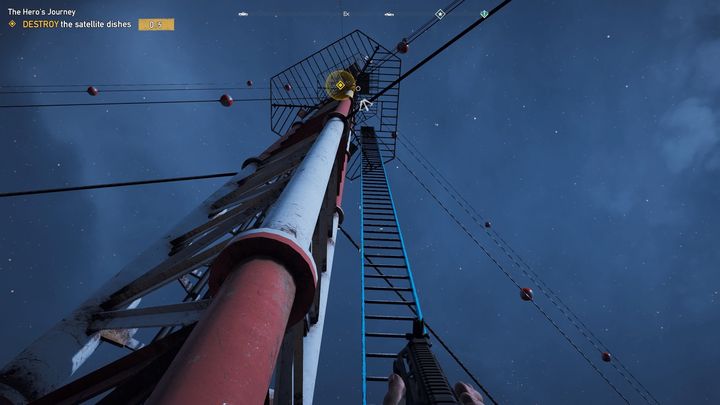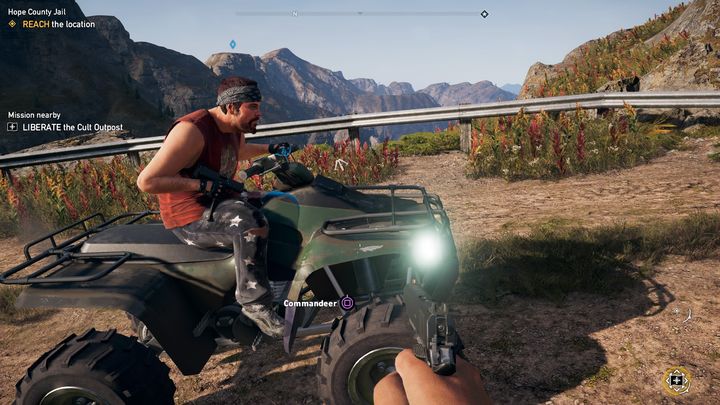The Far Cry series has been going strong since the first game hit shelves back in 2004, so it’s no surprise that Far Cry fans welcomed Ubisoft’s announcement last year that a new entry in the series would be coming out in 2018. And Far Cry 5 sure is a superb addition to the franchise, which brings some interesting gameplay changes to the table, even if admittedly not all of these changes are for the best.
As in the earlier games, this features the typical Far Cry plot in which you travel to a distant, isolated location with a group of colleagues. Of course, things go horribly wrong at some point, and you find yourself having to put things right and rescue your pals.
This time though, the game is not set in some remote corner of the world like Far Cry 3’s Pacific islands or Far Cry 4’s Himalayan country of Kyrat, but in Hope County, Montana, which has been taken over by a sinister cult.
And the truth is that Montana looks unbelievably pretty in this game, whether looking at distant trees shrouded in fog, or the calm waters of one of Hope Country’s lakes, there’s a level of photorealism here that reminds me how much video game graphics have advanced in the last couple of years. Character models look good too, with the latest version of Ubisoft’s Dunia engine shining in this game.
Disappointingly though, while the game does look fantastic and runs smoothly for the most part, I encountered a few graphical glitches throughout my playthrough. For instance, enemy corpses sometimes clip into the scenery, while the frame rate dipped quite a bit at points, but this happened only very rarely throughout my playthrough. Also, while the outdoors look fantastic in this game, indoor locations don’t look quite as good here truth be told. But still, these are all minor blemishes in what is a great-looking game overall.
Of course, you don’t travel to Hope County, Montana in order to enjoy the views, but to arrest a character named Joseph Seed, known to the locals as “The Father”. He’s the leader of the sinister cult which has taken over the tiny US location, and forced the inhabitants of Hope County to follow his twisted version of religion. Of course, you can imagine things go horribly wrong, chaos ensues, and you and the other members of your party end up in different locations of the Montana county.
Aside from the new Montana setting, a major change you notice upon starting the campaign is that you no longer play a pre-defined character. You play an anonymous law enforcement deputy here, and you get to pick your character’s gender too, which is a first for the series.
This is a far cry from earlier games in which you played a set protagonist, such as Jason Brody in Far Cry 3 or Ajay Ghale in Far Cry 4. In the former, Jason’s stuck up attitude and quippy nature made him somewhat annoying, while Ajay Ghale was a more muted, serious and uncharismatic protagonist in the latter.
So it just feels like a natural progression for Far Cry 5 to have a silent protagonist, something I thought would impact my enjoyment of the story at first. This did not turn out to be the case though, and I simply did not miss hearing my character’s voice in Far Cry 5 as much as I thought I would. You can also customize your character to your heart’s content, altering his or her appearance and choosing which gear to wear, which is also a plus.
But while the protagonist here is silent, at least the non-player characters are pretty good. Amongst these is the game’s larger than life villain, Joseph Seed (aka The Father), an ego-driven maniac who rivals Pagan Min from Far Cry 4, even though he’s not quite as memorable as the earlier game’s villain. Neither does he reach the heights of Far Cry 3’s insane Vaas (who’s still the best bad guy in the Far Cry series by a long shot), but is a serviceable villain for this America-set Far Cry all the same.
The Father is aided by his siblings, Jacob, Faith and John Seed, who are also colourful personalities in their own right, and whom you’ll have to deal with before facing the evil bastard himself.
Actually, Far Cry 5’s map is divided into four distinct regions, one for each of The Father’s siblings (or Heralds as he calls them), plus one final region you enter after dispatching The Father’s three lieutenants. And it’s a testament to the ingenuity of the people at Ubisoft Montreal that each of these regions feels quite different to the other.
This is due to each of Joseph Seed’s lieutenants colourful personalities, and the different people you’ll be working with in each region to take each of them down. For instance, in Jacob’s region you’ll be teaming up with the Whitetail Militia and their charismatic leader Eli in order to face Jacob Seed’s cronies and his specially trained wolves. Meanwhile, in Faith’s region you’ll battle “Angels”, zombie-like enemies who are actually humans under the influence of the Bliss, a drug the cult is manufacturing for its evil purposes. There’s John Seed’s region too, where you’ll join forces with the local priest (and a sexy bartender too), but which sadly doesn’t feel as unique as the other too, but still features plenty of good missions to tackle.
Also, while it’s possible to jump from one region to another and take on missions in each, I tended to stay in one region until I dispatched its boss and finished the associated quests. And while you might think this might make the game feel smaller, each region is big and different enough that Far Cry 5 feels as meaty and substantial a game as its predecessors overall.
Inside each region, you’ll be presented with a variety of stuff to do, including plenty of optional activities, and of course, the main story missions. The thing is, both aspects of the game (main story and open world activities) are actually connected here, thanks to the game’s new concept of “resistance points”.
For instance, destroying cult property (one of the optional activities in Far Cry 5), yields resistance points. Actually, almost all activities you carry out in the game, such as killing high-ranking officers of the cult or saving hostages, nets you resistance points.
This is a new way to progress in the game, and means the story can move forward even if you decide to ignore the plot and go and perform side missions instead. This is because accumulating a certain number of resistance points will typically lead to the villain in charge of the region you are in sending a squad to capture you, triggering a story cutscene.
This might seem like a way of forcing the story on you, but bear in mind you earn the bulk of resistance points by completing main story missions. But since you also earn a lesser amount of these when completing the optional, open world missions, there’s a possibility the story might continue whether you want it or not, which you may find annoying.
Truth be told, I preferred the way Ubisoft had kept the main story and side activities mostly separate in earlier Far Crys, even if the way you progress in Far Cry 5 does add a sense of urgency to the proceedings and helps keep you on your toes too.
Aside from the silent protagonist and changes to how the story progresses, there is also another major change in Far Cry 5. This is because the radio towers, a major part of earlier games, are no longer central to Far Cry’s gameplay. You had to climb these in previous games in order to reveal the map and places of interest on it, but that’s no longer the case.
Instead, Far Cry 5 lets you discover the game world in a different way, and as you complete story missions and take over the cult’s outposts the “fog of war” will slowly recede. Additionally, the game highlights places of interest for you right off the bat, such as a taxidermy or lumber mill, and by pointing the cursor on one of these you get to hear a radio transmission from the people asking for help against the cultists (or “peggies” as they are known to the locals), which is a nice touch.
This doesn’t mean radio towers are completely gone in Far Cry 5 though, and some of the story and side missions require that you reach the top of one of these for some reason. And doing so is still a lot of fun in those missions that require you to, even if I still prefer Far Cry’s tower-climbing days of yore.
You might appreciate the fact that Far Cry 5 does let you discover its world in a more natural way, though, and for instance you can locate cult outposts in the game world by looking for columns of smoke when flying over Hope County in helicopters, one of the new vehicles available in the game.
Like in earlier Far Cry games, liberating outposts is a central activity here. This gets you resistance points when you’re attempting to free a region from the cult, and like in previous games, it’s better to plan your attack beforehand and attempt to disable outpost alarms first.
Taking over outposts is much harder if you don’t disable the alarms, as enemies can call for reinforcements, but even if you choose to take outposts the hard way, you can always rely on one of Far Cry 5’s companions to help you out. Actually, you can recruit people all over the county to fight the cult.
Of course, these generic guns for hire have also featured in earlier Far Cry games. What’s new here, though, are the specialists. These are unique characters with their own personalities and perks who can fight by your side, if you complete their associated story mission.
One of these is recurring Far Cry character Hurk, a frisky guy armed with a rocket launcher who’s great fun to have around. I tended to pick Jess Black more often though – a female huntress who’s a master of the bow and who’s a great character when you’re trying to catch the cultists by surprise, as she’s great when it comes to approaching situations stealthily. There’s also the dog Boomer, which can tag enemies ahead of you and is also a good companion for those who favour stealth.
There are a total of nine unique characters to pick from as companions in Far Cry 5, and it’s clear that this aspect of the game is quite a bit better than in earlier Far Crys, for sure.
Those who prefer to fight solo though, will be happy to know that you can improve your character via perks, such as one which gives you extra health bars, making you last longer in combat, or another which lets you deal more damage with certain types of guns in combat.
Other perks in Far Cry 5 have been added in order to reduce the tedium of previous games in the series. For instance, there’s a perk that lets you carry a third weapon of any type, whereas in previous Far Cry games you would have had to spend quite a while hunting and skinning animals in order to craft a bigger weapons holster. This helps reduce the focus on crafting of earlier Far Cry games, which is a good change overall.
Nonetheless, you can still hunt animals and sell their skins for profit here. Hunting animals also lets you use their meat as bait to attract predators to aid you in combat, although I hardly resorted to this during my playthrough.
But even if some aspect of the game is not to your liking, there are still plenty of side activities you can take part in, including the races. These are timed challenges that let you emulate the exploits of Clutch Nixon, a local hero in the game’s Hope County. These are fun to play through, even if sometimes I did not get a vehicle to ride at the start of the race and had to restart, plus there’s no obvious way to exit the race and return to the game world besides reaching the finish line or quitting the game either.
Also, if you are driving on Hope County’s roads and have an objective marked on the map, an augmented reality-style blue line of arrows appears on the road to guide you to your destination. I found this slightly immersion breaking, but is actually quite necessary taking into account the game’s designers chose to leave the mini-map out of Far Cry 5 (something I did not miss much throughout my playthrough though).
Another issue concerns Far Cry’s trademark hallucinatory sequences. While I found these quite entertaining overall, there’s a gallery shooter-type action sequence in which you have to fight your way out of a series of corridors and rooms before a timer expires, which is slightly annoying and which you have to play through several times during the story. Also, the Bliss-induced dreams you go through in Faith Seed’s region are slightly overdone too, truth be told.
And the final confrontation with Joseph Seed (aka The Father) is not so great either, but the ending you get if you choose to face Joseph Seed in Far Cry 5’s final sequence sure is shocking, making it worth playing through the game in order to watch the denouement.
In the end though, and despite the blemishes, this surely is one of the best action games to come out this year. Far Cry fans will definitely want to pick this one up, while fans of open world shooters will find much to enjoy in Far Cry 5 too, as this no doubt is one of the best games in the franchise to date.
Far Cry 5
Score: 89 / 100
Available on: PS4 | Xbox One | PC
Reviewed on: PS4
Publisher: Ubisoft
Launch date: March 27, 2018

